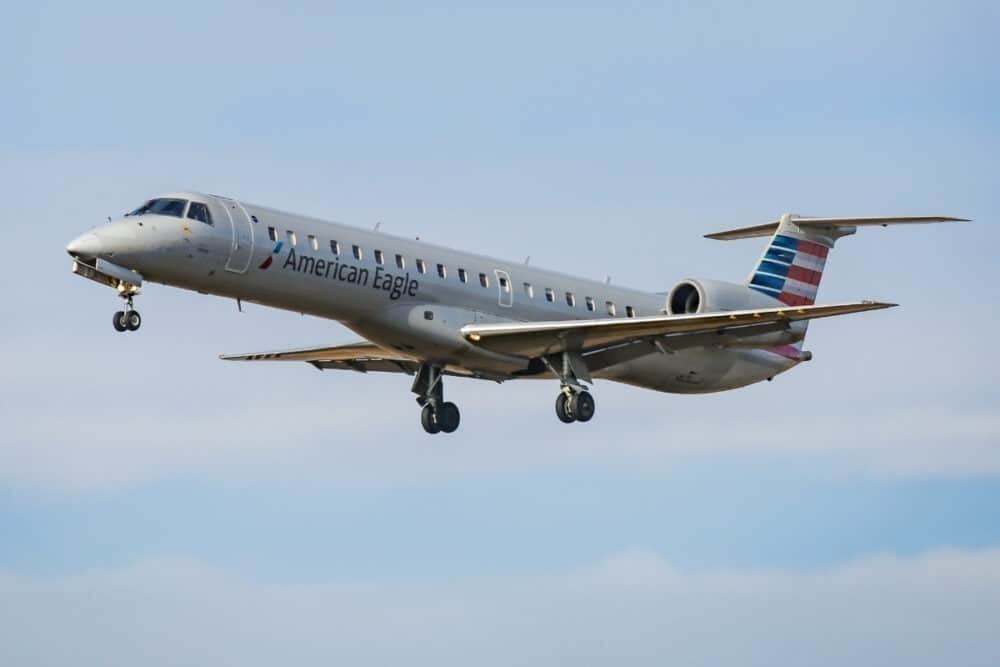American Airlines is the largest airline out of Miami International Airport (MIA). The airline uses the Floridian airport as a key Latin American gateway with plenty of long-haul opportunities across South America and a few services into Europe. However, in recent months, two of the largest airlines in the US, Delta and Southwest, announced separate plans to add Miami to their route networks. So, is American’s Miami hub under threat? Simple Flying takes a look.

American starts out in a strong position
Data from the Bureau of Transportation Statistics (BTS) shows that, from January through December 2019, American Airlines held an impressive 68.61% market share at the airport, with over 14.8 million enplaned passengers. The next largest carrier is Delta, with an 11.62% share. Note that American’s market share excludes regional operations that help feed the airline’s Latin American and Caribbean gateway.
When combining regional carriers that operate under the American Eagle brand, American has a healthy market share of over 73%, with Envoy Air, a wholly-owned subsidiary of the American Airlines Group, commanding just under a 4.5% market share in Miami.




For reference, before counting in regional carriers, United Airlines had a 51% market share in Houston Intercontinental (IAH), and Delta notched a 53.55% market share in Minneapolis/St. Paul (MSP) in the same time period. Houston is United’s largest southern US hub, while Minneapolis is Delta’s third-largest hub.
Delta and LATAM plan a “gateway hub”
In a filing with the Department of Transportation (DOT) for the approval of a joint venture between Delta and LATAM seen by Simple Flying, Delta stated it would embark on a “significant expansion of services at Miami supported by LATAM feed from South America, providing a direct competitive challenge to American Airlines at this key US gateway for South America service.”
While Delta’s specific planned routes out of Miami remain confidential, the airline did note it had plans to add over 20 additional domestic flights to Miami from its hubs and “top corporate travel destinations around the US.” Thus far, Delta has given a taste of its plans with flights out of Miami to Tampa, Orlando, Raleigh, and Salt Lake City, with only the latter being a hub.




Delta expects that, once the joint venture is fully implemented, compared to pre-crisis operations, it will increase its seat capacity at Miami by 33%, which is associated with 57% more Delta flights at Miami.
Southwest Airlines is coming to Miami
At the end of this week, Southwest Airlines announced that it would be launching flights to Miami. While specific routes will be named later, Southwest has traditionally focused on point-to-point flying out of Florida and leveraging some connections through its bases like Baltimore (BWI), Houston (HOU), and others.
While Southwest is likely to start up routes out of Miami to a few different destinations using only a few gates, thanks to the airline’s incredibly efficient turnarounds and boarding system, the airline will help push down fares and increase competition on select routes. However, it will likely stop short of opening a full-fledged base out of Miami.




The reason for this is because Southwest already has a pretty significant base out of Fort Lauderdale (FLL), which is only about 26 miles (about 42 km) north of MIA. Through Fort Lauderdale is not as extensive as some of its other bases, Southwest does offer nonstop service to 36 destinations out of FLL. Plus, Fort Lauderdale is a low-cost hub with Spirit and JetBlue competition closely with Southwest at the airport.
Miami International Airport is a much more expensive airport to operate at compared to some others in Southwest’s system and traditionally caters to more business travelers, thanks in large part to the large number of foreign airlines that fly into the airport and American’s hub. Although in recent years, Frontier Airlines has also tried to break into the market.




Essentially, for Southwest, there is not as big of a market into Miami as there would be in Fort Lauderdale, not to mention Southwest’s existing operations also out of West Palm Beach (PBI). CEO Gary Kelly stated that Miami would “complement” and “augment” Southwest’s existing services out of FLL and PBI.
So far, it seems American will likely hold its position in Miami
Hub wars can be quite nasty. Some may remember Delta’s hub out of Dallas-Fort Worth International (DFW), which it ended up cutting as a hub in the post-9/11 environment. American Airlines prevailed in that war and continues to be the largest carrier at the airport with a market share of well over 75%.




While Southwest has shown some appetite to challenge airlines at its hubs, such as its operations out of Atlanta (although much of that was inherited from a merger with AirTran), Delta Air Lines has only seen some success challenging incumbent airlines as seen with the airline’s newest hub out of Seattle and growing market share out of New York-JFK. However, with its largest hub less than two hours flying time from Miami, Delta will likely stay a domestic player with routes focused on feeding LATAM’s South American network.
With the current crisis decimating travel demand, it is doubtful that any airline tries to build up a genuine, new hub to compete with American Airlines. New hubs require large investments and a lot of time and energy, which would be better spent at airlines rebuilding their existing operations in cities and markets where they already have a significant share or name recognition. For now, American Airlines will likely get to keep Miami all to itself and continue to maintain a robust and enviable Latin American operation.
Do you think American’s Miami hub is under threat? Let us know in the comments!



